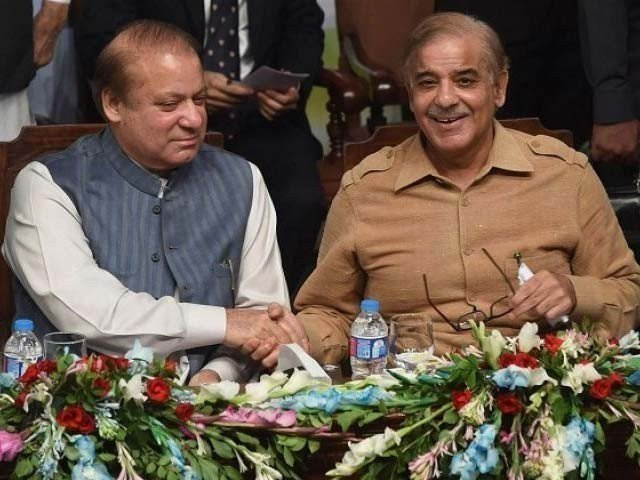Opinion: Five years in power – PML-N largely delivered on promises
New resource envelop should be creatively used by next govt to improve economic governance and growth

Largely given the mandate to govern the country to recover economic growth and gain energy security in 2013, the party’s economic performance is being intensely debated
PHOTO: EXPRESS
Largely given the mandate to govern the country to recover economic growth and gain energy security in 2013, the party’s economic performance is being intensely debated.
Presenting highlights of the government, Prime Minister Shahid Khaqan Abbasi has highlighted the following facts to defend government’s economic performance. It provides with a good measure to evaluate the five-year economic track record.
- Agricultural credit has increased from Rs259 billion in 2013 to Rs756 billion in 2018
- Production of major crops including wheat, maize, sugarcane and rice has also increased over this period
- Inflation in 2013 was 7.75% while the Consumer Price Index today stands at 3.77%
- The government has been able to bring exports to the same levels as they were in 2013
- Imports have increased from $33.4 billion to $45.6 billion, which was cited as a challenge by the prime minister
- Remittances have grown over 40pc while the FDI is three times that in 2013. Both public and private investments have increased over this period. Meanwhile, per capita income showed a 23% rise
- Over 2013-18, the Benazir Income Support Programme (BISP) increased from Rs46.5 billion to Rs121 billion, from 3.75 million beneficiaries to 5.63 million beneficiaries while monthly stipend increased to Rs5,000
- FBR’s tax collection was Rs1.505 trillion and is now at Rs2.919 trillion
- Credit to private sector was negative in 2013, but has now been brought to Rs527 billion
- As a percentage of GDP, domestic debt has increased from 42.5% to 46.5% and external debt has fallen from 21.4% to 20.5%
One of the fiercest critiques of the outgoing government, Dr Ashfaque Hasan Khan, has consistently questioned the claims made by the PML-N leadership. In his recent article, he questioned the veracity of all growth statistics cited by the latest Pakistan Economic Survey.
He concluded, “Our estimates suggest that real GDP growth has been in the range of 4.7-4.9% in 2017-18 and not 5.8% as reported by the government.”
Energy security
Another set of criticism is largely based on energy security-related performance. Accordingly, while the government has been able to increase production to 20,000 megawatts, the transmission and distribution system is crumbling and financial management of the energy system has deteriorated as indicated by the size of the circular debt.
Moves may be economic, but players are all political
In his assessment based on the Planning Commission’s report comparing targets of the 11th Five-Year Plan (2013-18) with the achievements, an economic correspondent has concluded that the government has missed all major economic targets.
Rather than questioning the government’s reported figures, he has cited Planning Commission’s own report issued early in 2018. This is a useful comparison and following are key observations.
*Average gross domestic product growth in the first four years remained at 4.4% against the target of 5.4%
*Average growth in the agriculture sector was 2.1% against the target of 3.5%
*Average industrial output growth was 5.1% in the first four years against the requirement of 6.3%
*Large-scale manufacturing grew at an average pace of 4.3% against the target of 6%
*Services sector grew at an average pace of 5% against the Five-Year Plan’s target of 5.8%
*Exports had been targeted to increase to $29.5 billion by fiscal year 2017-18 under the plan. At the end of the fourth year, exports stood at only $20.4 billion
Half glass empty
These critical commentaries do not convincingly contradict the position taken by the PML-N leadership.
Ashfaque’s criticism is largely based on data integrity, but remains short of alternative sources of data, this can be at best considered as an interpretation.
PML-N finished with Nawaz sent packing: Bilawal
The criticism of the failure of transmission and distribution system and financial mismanagement is valid, however, it is akin to looking at the half glass which is empty.
The Planning Commission report has compared average indicators against the targets set, but it does not necessarily contradict the numbers quoted by the outgoing prime minister, which is essentially based on comparison between 2013 and 2018.
When PRIME Institute released its 10th and conclusive scorecard in March, it assigned a respectable score of 63% to the PML-N. In my view, increased credit flow to both private and agriculture sectors, doubling of tax revenue and large flows of Chinese capital via CPEC have together increased the resource envelop substantially.
For two and a half decades, Pakistan’s cotton output remains virtually stagnant
Certainly, current account deficit is alarming today and trade account looks particularly gloomy, but failure in one macroeconomic target should not be used to negate other respectable achievements, which the PML-N government have demonstrated. The new resource envelop should be creatively used by the next government to improve economic governance and further the growth process.
The writer is founder of PRIME Institute, an independent economic policy think tank in Islamabad
Published in The Express Tribune, June 4th, 2018.
Like Business on Facebook, follow @TribuneBiz on Twitter to stay informed and join in the conversation.



















COMMENTS
Comments are moderated and generally will be posted if they are on-topic and not abusive.
For more information, please see our Comments FAQ